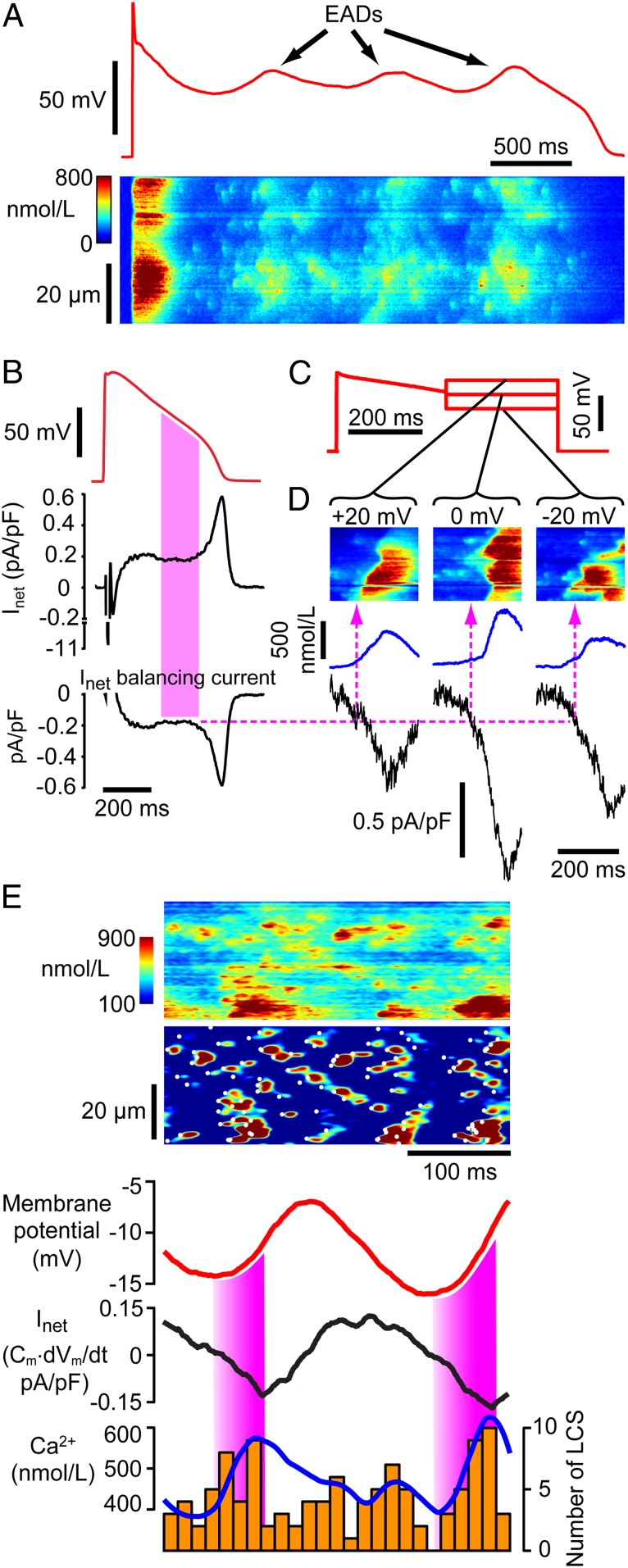Fig. 2.
LCS can trigger EADs. (A) EADs evoked by pacing-pause protocol. During repolarization, an initial Vm inflection at ∼ −20 mV generates EADs (Top), and numerous LCS create oscillatory Ca2+ release (Bottom). (B) Calculation of Inet for a typical HF AP. The filled region indicates where the greatest number of LCS occur (A and Fig. 4E) and corresponds to an Inet of ∼0.18 pA/pF. Any balancing current that counteracts Inet (i.e., −Inet, Bottom) will stop repolarization (SI Appendix, Fig. S5). (C) Failing AP with voltage-clamp steps used to probe Ca2+ and currents underlying EADs. (D) During the AP steps, LCS-triggered Ca2+ waves (Top) and inward currents (black trace) appear. Dashed line shows the inward current that balances Inet in B and could therefore stop repolarization. This current occurs when LCS are about to initiate Ca2+ waves. (E) Example of apparently chaotic Ca2+ during EADs in an HF cell (Top). Image processing reveals many LCS and Ca2+ ripples during Vm oscillations (red trace). The filled regions show where the depolarizing current (Inet) is increasing, and this corresponds to increasing Ca2+ (blue) and LCS activity (orange bars).

